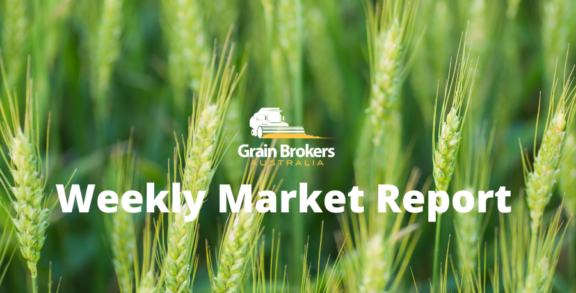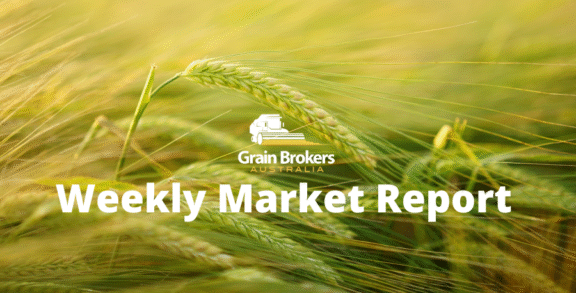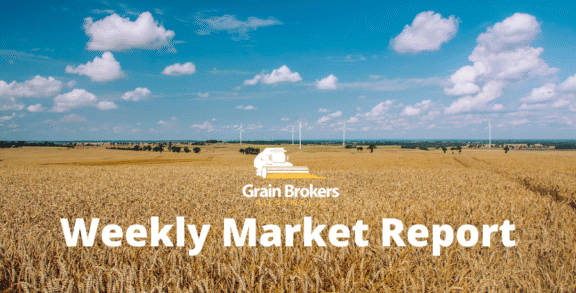
Historically a major wheat importer, Iraq is facing an unexpected surplus in 2024/25 after growers planted a record area on the back of government subsidies aimed at improving self-sufficiency, and excellent growing season rainfall led to a bumper harvest.
With bread and flour products a dietary staple, wheat is an extremely important crop in Iraq, accounting for around 70 per cent of total cereal production. Output from this year’s harvest is estimated at a record 6.3 million metric tonne off a planted area of around 2.7 million hectares for an average yield of 2.33 metric tonne per hectares. This compares to the 2023/24 crop of 5.2MMT and the five-year average of 4.3MMT.
After widespread crop failure in the country’s north decimated 2023/24 barley output to just 200,000 metric tonne, production recovered dramatically this season to 1.4MMT, significantly higher than the five-year average of 850,000 metric tonne. Locally produced barley is primarily used as feed for livestock and intensive poultry production.
About 13 per cent of Iraq’s total land area is arable, another 10 per cent is permanent pasture, and approximately half the nation’s arable land is irrigated. A large proportion of the arable land is in the north and northeast, where rain-fed farming dominates and is sufficient to cultivate winter crops such as wheat and barley. The remainder is in the valleys of the Tigris and Euphrates rivers, where irrigation is necessary throughout the year to grow crops.
Often referred to as the cradle of civilisation, The Fertile Crescent, which encompasses modern-day Iraq, is believed to be the first region in the world where settled farming emerged more than 10,0000 years ago, as people started the process of land clearing and modification of natural vegetation to grow newly domesticated plants as crops.
Named for its rich soils and relatively abundant water supplies, increased population and demands on the rivers from urbanisation have depleted the once-fertile land. Beginning in the 1950s, a series of large-scale irrigation projects diverted water away from the famed Mesopotamian marshes of the Tigris-Euphrates River system, causing them to dry up. Over farming throughout the region has led to desertification and salination in many areas.
In recent years, agriculture in Iraq has suffered from a lack of rainfall due to the changing climate, with much less water flowing along the nation’s two main rivers, the Tigris and Euphrates. Decades of conflict have also severely disrupted the country’s farming systems. Nadhir Al-Ansari, professor at Sweden’s Lulea University of Technology, said rainfall in Iraq had declined by 30 per cent over the past three decades, with the lowest precipitation during that period coming in the two years preceding the record 2024/25 season.
The UN lists Iraq among the five countries most vulnerable to climate change globally, making food security a high priority for the government. However, as the second largest producer in the Organisation of Petroleum Exporting Countries (OPEC), it is facing budget pressure in 2025 due to lower oil prices. While still being finalised, this will likely lead to a decrease in the premium paid to local growers over the global price for next year’s wheat output.
The government is deeply involved in the wheat value chain, owning 97 per cent of the country’s 280 licenced flour mills. Domestic production is primarily fed into the Public Distribution System (PDS), a ration card system that directly supplies food to middle and lower-income families. At 850,000 Iraqi dinars (AUD960) per metric tonne, the Iraqi government paid local growers more than double the global price for this season’s purchases.
To meet the requirements of the growing subsidy program, the government requires around 5.0MMT annually, with total domestic demand sitting at around 7.5MMT. In July, the General Company of Grain Trade announced that it had purchased 6.3MMT of locally produced wheat, the most ever in its history. This leaves the government with an unexpected wheat surplus this year of around 1.3MMT that needs to be liquidated.
Iraq could export the surplus to neighbouring countries. Still, Haider Nouri al-Qarawi, director of the General Company of Grain Trade, recently stated that the government prefers to keep the wheat inside the country to support domestic millers and decrease reliance on flour imports from Turkey, Kuwait and the Emirates. It has reportedly been selling the excess wheat to local flour millers at 450,000 Iraqi dinars (AUD509) per metric tonne, leaving Bagdad with a significant financial headache.
According to Haider Nouri al-Qarawi, at the beginning of October, around three months after the conclusion of this season’s harvest, wheat reserves were still sitting at 5.5MMT. Playing down the financial impact, Nouri explained that this large wheat stockpile is sufficient to meet one year of local demand, underscoring that flour prices will not rise with any global crisis.
However, with global prices cheaper than the wheat surplus sale price, domestic millers are likely to pressure the government to review the price lower, as they can import better quality milling wheat for less. Add the fact that the government has limited storage space and cannot carry the unused surplus through to next year, gives domestic mill operators significant bargaining power.
In August, the government approved the sale of a limited amount of wheat to licensed public and private mills at prices equivalent to the import price of similar quality wheat in a move to not only enhance local flour production and reduce the reliance on imported wheat and flour, but also hasten the surplus selldown process.
How this impacts Iraq’s import demand for wheat will be interesting. The International Grains Council anticipates 2024/25 wheat imports of 2MMT, down from 2.2MMT last season and the five-year average of 3.2MMT. And despite an import duty that commenced at 10 per cent in September and rises to 25 per cent in January, the IGC is still forecasting flour imports of 1.5MMT, down from 2.1MMT in 2023/24. In last week’s global supply and demand update, the USDA pegged Iraq’s 2024/25 wheat, flour and wheat product imports at 2.4MMT, down from 2.8MMT and 4MMT in the two prior years, even though it seems to be seriously underestimating this year’s harvest at 5.7MMT.
Iraq’s wheat import program also appears to have pivoted dramatically toward Russia in the past 12 months at the expense of traditional shippers. A quick scan of Australian export data supports that trend, revealing just one cargo of 36,000 metric tonne in March this year compared to a tad shy of 1MMT in the first seven months of 2023. And just last month, Haider Nouri al-Qarawi stated that Iraq is planning to import between 150,000 and 200,000 metric tonne of Russian wheat on a monthly basis to meet its domestic milling requirements.
Call your local Grain Brokers Australia representative on 1300 946 544 to discuss your grain marketing needs.
Written by Peter McMeekin.





